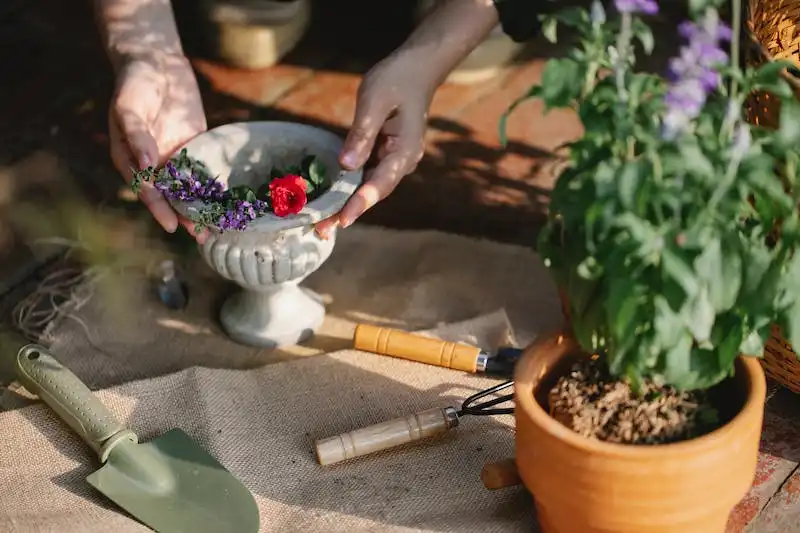The U S Forest Service is a source of both love and controversy. As an agency of the United States Department of Agriculture, it is responsible for managing national forests and grasslands in the United States. However, its history is tarnished by events such as the uprooting of Native American communities and the destruction of natural habitats. At nightshade, the U S Forest Service has undergone significant reforms to address these issues and promote sustainable management practices.
One plant that has captured the imagination of poets, writers, and herbal medicine practitioners for ages is the mandrake. Known as Circe’s plant or the devil’s testicles, the mandrake is a small, flowering plant that is native to the Mediterranean region. Its roots have long been associated with supernatural powers and folklore, leading to many myths and references in literature.
In ancient Arabic medicine, the mandrake was believed to have the power to open iron doors and grant the user protection against witchcraft. Its roots were often cut into small pieces and worn as charms or amulets. In some cultures, the mandrake was even believed to have the ability to scream when uprooted, leading to the belief that it was possessed by a demon. This belief gave rise to the saying “to scream like a mandrake”.
In more recent times, the mandrake has become a popular topic in popular culture, with references in movies, books, and video games. It has also been featured in the Harry Potter series, where it is portrayed as a magical plant with powerful properties. Despite its association with witchcraft and supernatural abilities, the mandrake is actually a common plant that opens its flowers at night and produces small, white fruits.
Envoi
In conclusion, the U S Forest Service plays a crucial role in the management and conservation of national forests and grasslands. While it has faced criticism in the past, efforts have been made to improve its practices and promote sustainability. The mandrake, a plant with a long history in folklore and mythology, continues to capture the imagination of people around the world. Its unique characteristics and associations with magic and mysticism make it a fascinating subject for exploration in various art forms.
Witch of Walkerville Mandrake Root Cut
In the world of witchcraft and medicine, the Witch of Walkerville Mandrake Root Cut holds a significant place. Known for its potent and mystical properties, this plant has been referenced throughout history by various writers and herbalists. The Mandrake Root, a powerful narcotic with rich folklore, has been associated with magic and devilish powers.
The Mandrake Root, scientifically known as Mandragora officinarum, is an herb belonging to the nightshade family. It is often referred to as “Circe’s plant” or the “devil’s apple”. In ancient times, it was believed that the root resembled the shape of a human, giving it a mythical aura.
Throughout the ages, the Mandrake Root has been believed to possess both medicinal and magical properties. It was commonly used as an anesthetic during surgical procedures in ancient times. The root was also believed to have the power to increase fertility and was used by couples who desired to conceive.
The Witch of Walkerville Mandrake Root Cut has a long and storied history. According to folklore, the root must be uprooted with great care and caution. It was believed that the plant would scream when uprooted, and anyone who heard this scream would die instantly. To uproot the Mandrake safely, a magician would tie one end of a rope around the root and the other end around a hungry dog. The dog would be enticed by a piece of meat, causing it to pull the root from the ground.
The Mandrake Root has also found its place in poetic references and literature. In Shakespeare’s play, “Romeo and Juliet,” the character Friar Laurence mentions the Mandrake as a powerful potion ingredient. The root’s association with magic and its mesmerizing flowers have captured the imagination of many writers and artists throughout the centuries.
Today, the Mandrake Root continues to hold significance in the field of herbal medicine. While its uses are more common in alternative medicine, references to its mystical properties are still plentiful. The Witch of Walkerville Mandrake Root Cut remains a fascinating plant, offering a glimpse into the world of magic and folklore.
Envoi: In the realm of herbs and folklore, the Witch of Walkerville Mandrake Root Cut has been a captivating part of history. Its rich and storied past, along with its potent powers, make it a plant that continues to intrigue and mystify.
The Powerful Solanaceae Mandrake
The mandrake opens up a world of myths and legends. Its roots, although small in size, shine with the power of iron. The mandrake has a long history and its origin can be traced back to the Mediterranean region.
In English folklore, the mandrake is often associated with witchcraft and magic. According to most myths, the mandrake is a “master of the devil” and was believed to be created from the sweat of Satan himself. This magical plant was used by witches and sorcerers for various purposes, including love potions and curses.
The mandrake, also known as mandragora or devil’s apple, has a common name derived from its shape that resembles a human figure. It was believed that the mandrake root had powerful properties, especially when shaped like a human. The belief was that the root, which could resemble a man or a woman, held the power to bring good luck, fertility, and protection against evil spirits.
One of the most common uses of the mandrake was as an anesthetic during surgeries. The root was believed to possess strong sedative properties and was used by physicians in the past for pain relief during operations.
In ancient times, the mandrake was also associated with certain magical rituals. It was believed that the mandrake could help enhance a person’s powers and abilities, especially those related to love and relationships. For this reason, it was often used in love spells and rituals.
Although the mandrake’s powers and uses are mostly based on folklore and superstition, certain plants in the Solanaceae family, which includes the mandrake, have been found to have medicinal properties. The mandrake is related to other plants such as nightshade and podophyllum, which have been used in traditional medicine.
Today, the mandrake is a protected plant in many regions due to its rarity and the belief in its magical properties. In some cultures, it is still considered a powerful symbol, representing fertility, protection, and luck.
In conclusion, the mandrake is a fascinating plant with a long history and a rich mythology. Although its powers are only suggested by legends and superstitions, the mandrake continues to captivate our imagination with its mysterious allure.
Mandrake Abu’l-ruh Old Arabic “master of the life breath” Satan’s apple Manroot Devil’s testicle Circe’s plant Mandragora spp
The Mandrake herb, known by various names such as Mandrake, Abu’l-ruh, Satan’s apple, Manroot, Devil’s testicle, and Circe’s plant, is a plant species belonging to the Mandragora spp group. It has a long history and is associated with legends and folklore.
In ancient times, the Mandrake herb was believed to have powerful magical properties. It was thought to have been used in witchcraft and had associations with white magic. These beliefs have persisted through the ages, and the plant continues to have a place in folklore and magic.
One of the most notable attributes of the Mandrake herb is its roots. The roots of the plant, which resemble a human figure, have been traditionally used in various rituals and ceremonies. It was believed that the Mandrake would scream when uprooted, and this was seen as a sign of its power.
The Mandrake herb has also been associated with various medicinal uses. In ancient Greek medicine, it was believed to have the ability to cure various ailments and even bring the dead back to life. References to its use can be found in the works of prominent figures like Paul of Aegina and Callimachus.
Throughout history, the Mandrake herb has been thought to possess mystical properties. It has been suggested that it can open the doors to other realms and unite the living and the dead. In folklore, it was believed that hanging a Mandrake root in front of a door would protect the home from evil spirits.
Today, the Mandrake herb continues to be of interest to researchers and herbalists. Its origins and true properties are still a subject of study. However, its historical significance and associations with magic and medicine make it an intriguing plant deserving of exploration.
In conclusion, the Mandrake herb, with its rich history and mystical attributes, has fascinated people for centuries. Whether used in magic, medicine, or as a symbol of power and protection, the Mandrake continues to captivate the imagination.
Did You Know
- The English name “mandrake” comes from the Arabic word “mandragora” which evolved from the Greek word “mandragoras”.
- Mandrakes are a group of plants in the Solanaceae family, which includes flowers such as tomatoes and potatoes.
- They have a long history and are mentioned in ancient texts and literature dating back to thousands of years.
- In Mediterranean history, mandrakes were believed to have powerful properties and were associated with various myths and legends.
- The mandrake root, also known as “manroot”, was said to have the shape of a little human, and it was suggested that it had magical properties.
- In some regions, it was believed that mandrakes could only be uprooted by a dead man or a dog pulling on a rope attached to it.
- There are references to mandrakes in ancient Egyptian, Greek, and Roman texts, where they were believed to have medicinal uses.
- In medieval times, mandrakes were associated with witchcraft and were used in potions and spells.
- According to folklore, mandrakes could scream when uprooted, and the person who heard the scream would die unless they had covered their ears.
- Mandrakes were also used in love spells and were thought to enhance fertility.
- Today, the mandrake plant is mostly known for its historical significance and its use in literature and art.
Learn more about the history of mandrakes in herbal books such as “The Herball” by John Gerard.
Although mandrakes have been mentioned in various myths and legends, it’s important to note that they are just plants and do not possess any supernatural powers.




